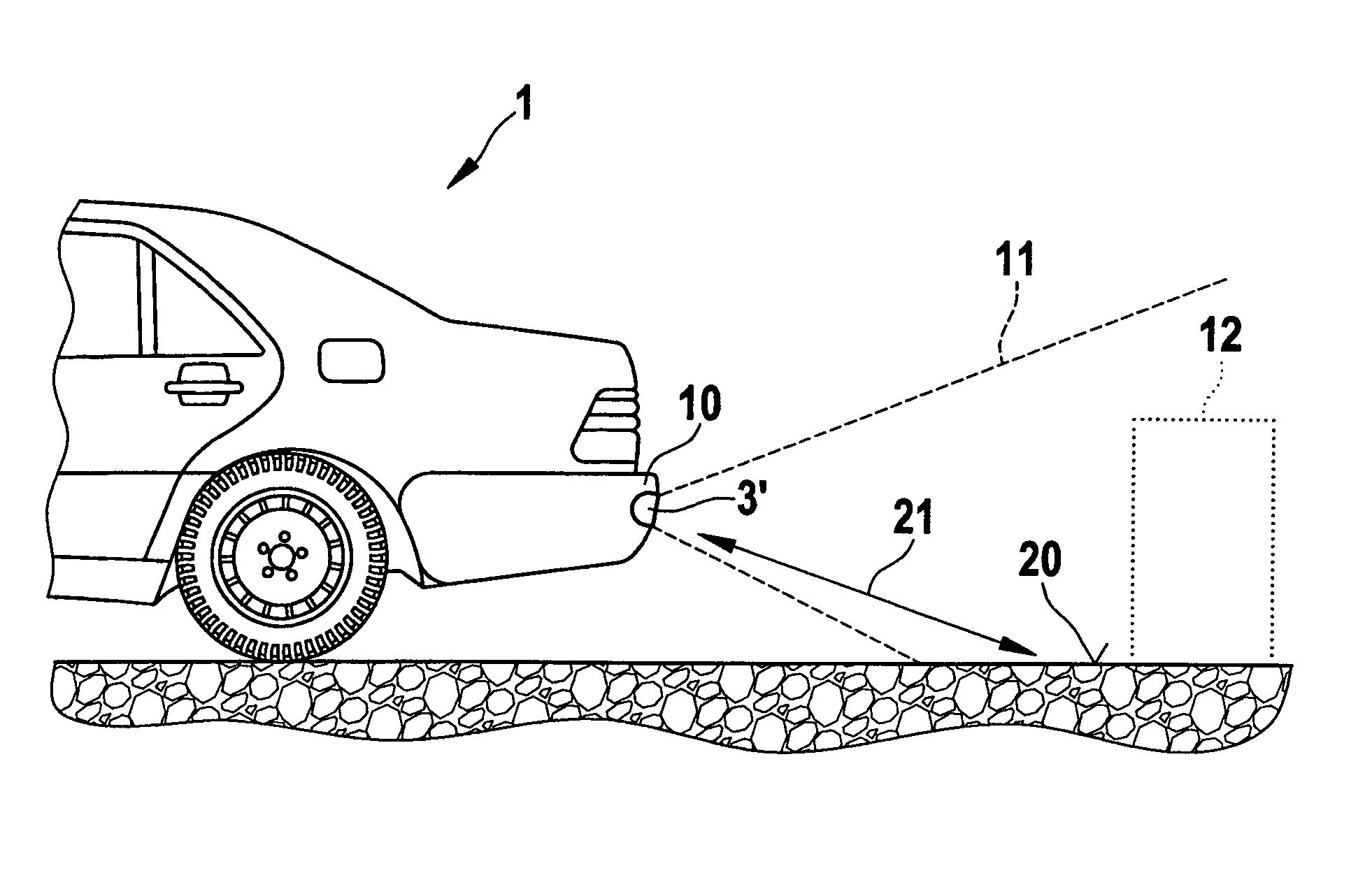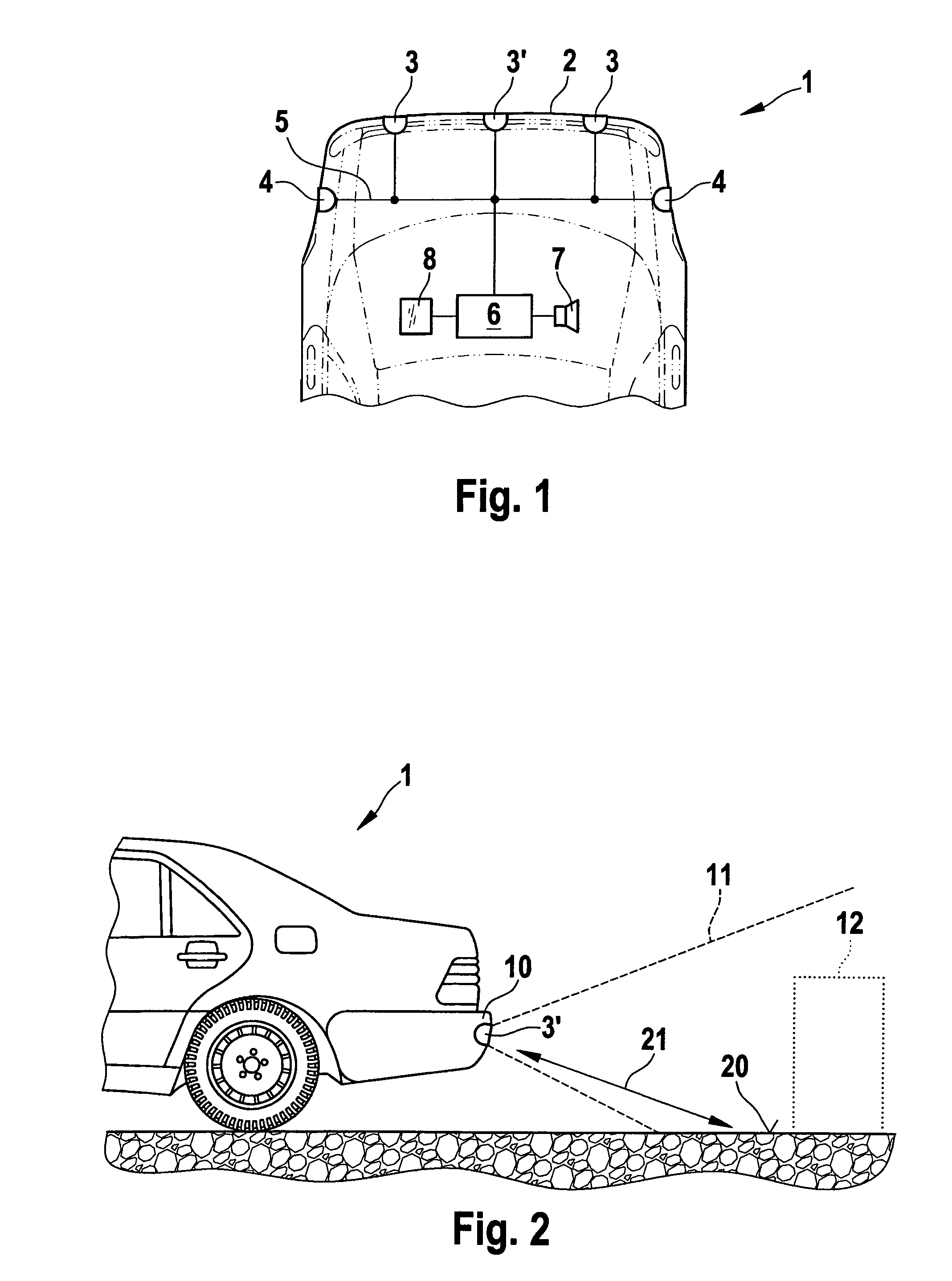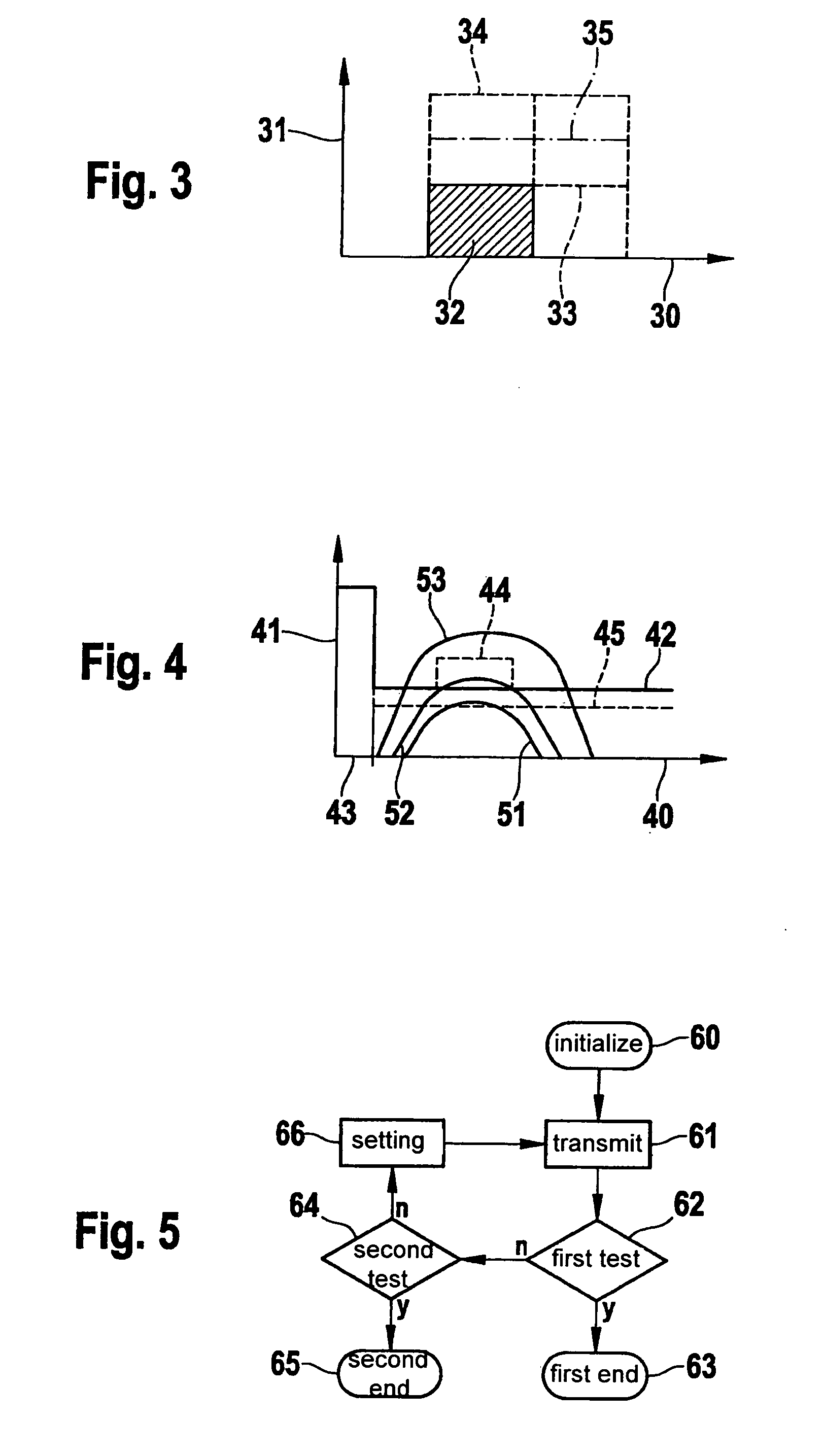Method for functionally testing an ultrasonic sensor
a technology of ultrasonic sensor and functional testing, applied in the direction of transmission monitoring, instruments, measurement devices, etc., can solve problems such as undesirable effects, and achieve the effects of reducing measurement time, amplitude, and reducing signal duration
- Summary
- Abstract
- Description
- Claims
- Application Information
AI Technical Summary
Benefits of technology
Problems solved by technology
Method used
Image
Examples
Embodiment Construction
[0015]FIG. 1 shows a rear end of a vehicle 1. On a rear edge 2 of the vehicle there are situated ultrasonic sensors 3, 3′. It is also possible to situate the sensors at a front side of a vehicle. In a preferred specific embodiment, ultrasonic sensors 4 can also be situated on the lateral corners of the vehicle. The ultrasonic sensors are connected to a control unit 6 for example via a bus system 5. Control unit 6 controls the emission of ultrasonic signals by ultrasonic sensors 3, 3′, 4. The ultrasonic sensors each have for example a piezoelement that electrically excites a membrane to emit ultrasonic waves. The ultrasonic waves are reflected by an obstacle that may be situated in the vicinity of the vehicle and are reflected back to the ultrasonic sensors. Control unit 6 can switch ultrasonic sensors 3, 3′, 4 into a receive mode. In receive mode, the reflected ultrasonic waves excite the membrane of the ultrasonic sensors to vibration. This vibration can be converted into electrica...
PUM
 Login to View More
Login to View More Abstract
Description
Claims
Application Information
 Login to View More
Login to View More - R&D
- Intellectual Property
- Life Sciences
- Materials
- Tech Scout
- Unparalleled Data Quality
- Higher Quality Content
- 60% Fewer Hallucinations
Browse by: Latest US Patents, China's latest patents, Technical Efficacy Thesaurus, Application Domain, Technology Topic, Popular Technical Reports.
© 2025 PatSnap. All rights reserved.Legal|Privacy policy|Modern Slavery Act Transparency Statement|Sitemap|About US| Contact US: help@patsnap.com



